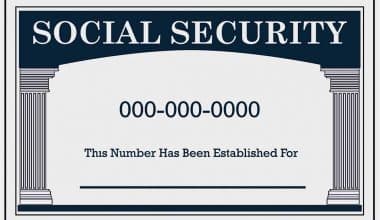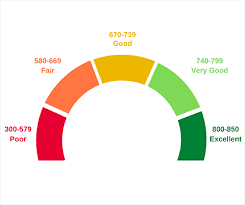If you’re in the market for new homes but are having problems gaining loan preapproval, owner financing is an alternative that can keep your dream of homeownership within reach. Though not all sellers will be willing—or able—to give direct financing to the buyer, it can be an excellent option to buy a property while streamlining the closing process. That yet, owner-financed homes can be difficult and involve a written agreement—so it’s crucial to understand the process before signing on the signed line. We’ll walk you through how owner-financing works, who pays property taxes on homes, how it might help you as a buyer or seller, and how to structure an owner-financed agreement.
What Is Owner Financing?
Owner financing—also known as seller financing—lets buyers pay for new homes without depending on a typical mortgage. Instead, the homeowner (seller) finances the purchase, frequently at an interest rate higher than existing mortgage rates and with a balloon payment due after at least five years. This can streamline the process of purchasing and selling a home by eliminating the need for a lender, appraisal, and inspection.
How Does Owner Financing Work
Just like a normal mortgage, owner financing involves making a down payment on the property and paying off the balance over time. That said, this alternative to standard financing is often more expensive and needs payback or refinancing into a traditional loan in as little as five years. Still, seller financing is frequently faster and easier to secure than a government-backed mortgage—if the seller can supply it.
And, while most owner financing needs some type of background or credit check, it can help otherwise disqualified borrowers attain homeownership. Not only are there no banks or traditional lenders involved, but owner financing also doesn’t demand an inspection or assessment unless the buyer wants them.
Once a buyer and seller agree to conditions, monthly payments are made to the owner-seller according to an agreed-upon amortization schedule. The borrower might also have to make a sizable lump sum payment at the end of the loan term depending on that timetable. However, unlike conventional mortgages, tax and insurance payments are typically not bundled into monthly debt service and must be made by the buyer separately.
The purchaser repays the lenders with the proceeds of a new loan or makes the balloon payment after the loan term, depending on which option they choose. Depending on how the owner financing was initially set up, either the seller will sign a Satisfaction of Mortgage confirming that the mortgage has been paid in full and relieving the lien on the property, or the buyer will receive title to the property for the first time.
Owner Financing Costs
The expenses of owner-financing homes may be lower because there is no need for a bank-issued mortgage, but just because the seller is supplying the money doesn’t mean the buyer won’t be responsible for closing charges. McDermott claims that owners financing buyers should still be prepared to pay expenses, like title search and deed recording fees.
Property taxes should also be considered. These taxes, along with the cost of homeowners insurance, are typically included in the monthly mortgage payment if you obtain a standard mortgage to purchase a property. In the case of an owner-financed acquisition, the borrower is liable for the payment of taxes and insurance premiums to the applicable taxing authority and insurance provider. The owner finance agreement should ideally include payment terms for both insurance and property taxes.
The good news is that, if you’re a buyer thinking about owner financing, closing expenses won’t likely increase your purchase price by as much as 5%, as they sometimes do with conventional mortgage financing. Atlanta-based realtor, investor, and real estate lawyer Bruce Ailion claim that owner-financed closing expenses are “typically significantly less than you’d pay with bank financing.”
Owner Financing on Homes
An expert realtor or real estate agent can assist you in locating properties that are being sold with owner financing if you are unable to obtain the financing you require from a bank or mortgage lender.
Simply check that the promissory note you sign is compatible with the law and properly lays out the conditions of the agreement. A seller financing agreement should be reviewed after a few years, particularly if interest rates have decreased or your credit score has increased, as this will allow you to refinance with a conventional mortgage and pay off the seller earlier than anticipated.
Mentioning the arrangement in the marketing of your homes will assist draw buyers who are interested in this possibility if you wish to provide owner financing as a seller.
Doing your homework is vital, according to McDermott. Making sure your buyer is ready and able to uphold their half of the contract is in your best interest because you won’t be using the sophisticated credit risk modeling employed by loan underwriters. He suggests that you demand a sizable down payment, preferably 15%. “Ascertain the buyer’s position and exit strategy, as well as their strategy and timetable. Last but not least, you want to be certain that the buyer will be able to pay you off and refinance when your balloon payment is due.
An owner-financing contract can be drafted in a variety of ways. Typical setups include:
- Promissory note
- Deed of trust
- Rent-to-own agreement
To safeguard the rights of both the buyer and the seller, it is essential to have the relevant paperwork created or reviewed by a skilled real estate attorney with experience in creating owner-financing arrangements.
Who Pays Property Taxes on Owner Financing
The owner of a property who has owner financing is also in charge of paying the property taxes. If the buyer is identified as the owner on the deed, they may be liable for paying the property taxes, but if the seller is providing the finance for the purchase, they are still liable.
Any deal where a property is sold in exchange for partial or full financing is known as owner-financing. A mortgage loan is a type of loan that can only be received by the owner, who is also the debt’s owner, as opposed to a bank or other lender. The buyer must adhere to the amortization schedule set forth by the seller and make regular mortgage payments to be eligible for this mortgage. When buying a house, you might need to take into account a range of financing choices.
A second mortgage can be requested by those who buy real estate, enter into a land contract, or take out a lease. With owner financing, the seller can sell the property as-is without demanding any repairs. The existing mortgage of the buyer carries a higher interest rate than the existing mortgage of the seller.
Example of Owner Financing
Consider a scenario in which a buyer wants to acquire a historic house but is unable to do so because of the property’s age and condition. The borrower agrees to pay $80,000 for the house and put down $25,000, or a little over 30% of the total cost.
With a balloon payment of around $47,000 due after five years, the seller agrees to finance the remaining $55,000 for a five-year term at a rate of 7% and amortize it over 20 years. In addition to making $426 monthly payments during the term of the loan, the buyer is also in charge of paying property taxes and insurance.
The buyer gains title to the house at closing, but it is still encumbered by the seller’s mortgage. The buyer makes the final balloon payment after five years of on-time monthly payments, and the mortgage debt is then discharged.
Benefits and Drawbacks of Owner of Homes
Because it can make it simpler to finance the purchase of a house, owner financing is a popular choice for borrowers. Instead of accepting a single sum payment, sellers may choose owner financing to hasten the closing process and collect interest. However, some drawbacks can discourage a buyer or a seller from agreeing to owner financing.
Benefits for Buyers
- Can give borrowers access to finance they might not otherwise be eligible for
- Allows buyers to finance homes even while they are ineligible for conventional financing
- Allows buyers and sellers to speed up the closing process by cutting the time for due diligence
- Lowers the cost of closing by doing away with bank fees, appraisal costs, and, if the buyer wishes, inspection costs.
- Removes the required minimum down payment for government-backed mortgages.
Benefits for Sellers
- Does not require owners to comply with a lender’s appraisal criteria, allowing them to sell their property as-is.
- Offers a potential investment with higher returns than the majority of conventional investments.
- Reduces the amount of due diligence required and gets rid of the lending process to speed up the selling process.
- Continues to permit the sale of the promissory note to a buyer in exchange for an upfront payment.
- Allows sellers to keep possession of their home and any mortgage payments made if the buyer defaults.
Drawbacks for Buyers
- Frequently entail interest rates higher than that of a conventional mortgage
- Could impose a balloon payment on borrowers after the loan term.
- The buyer’s creditworthiness may prevent the seller from agreeing to owner financing.
- The seller’s mortgage can have a due-on-sale clause that forbids them from providing owner financing because it compels them to pay off the loan when they sell the house.
Drawbacks for Sellers
- Subjects sellers to the possibility of non-payment, eventual default, and, in some situations, a need to start the foreclosure process
- If the borrower defaults, the seller is responsible for any repairs and other implications of postponed maintenance.
- Federal law may limit balloon payments, prohibit sellers from offering owner financing, and mandate that parties work with a mortgage loan originator.
How to Set Up a Seller Financing Transaction
Every time a buyer and seller agree to owner financing, the terms of the transaction should be formalized in writing. The ideal approach will depend on your particular needs and circumstances, but there are a few different methods to do this. Here are the three primary ways to organize a deal that is seller-financed:
#1. Make use of a promissory note, mortgage, or trust deed
This model will be familiar to you if you are familiar with conventional mortgages. A promissory note, which specifies terms including the loan amount, interest rate, and amortization schedule, is signed by both the buyer and the seller. The buyer’s name appears on the title, the mortgage is filed with the local government, and the house serves as security or collateral for the loan.
#2. Create a deed contract
A contract for deed is when a buyer waits to get the deed to an owner-financed property until he makes the last loan payment. It is also referred to as an installment sale or land contract. Alternatively, the buyer acquires title if he pays the seller in full and refinances the debt with a different lender.
#3. Construct a lease-purchase contract.
In this option, also known as the “rent-to-own” or “lease option,” the seller leases property to the buyer, who then has the option to purchase it for a certain sum. When the lease period is up, the buyer has two options: he can exercise his lease option and buy the property. The buyer pays rent. The rent paid during the lease time is credited against the purchase price if he decides to buy the property.
We advise dealing with a qualified attorney who will put your interests first while creating the relevant documentation because owner financing might be complicated.
When Should I Consider Owner Financing?
Owner financing is a popular choice for borrowers because it can make it simpler to finance the purchase of a house. Instead of accepting a single sum payment, sellers may choose owner financing to hasten the closing process and collect interest.
Is Seller Financing a Good Idea?
Yes. It is best for a seller who is financing the purchase of a home should ideally own the property outright or have a “minimal loan that could be paid off by the buyers putting a down payment on the property.”
Does Owner Financing Hurt Your Credit?
In most cases, a seller financing agreement will often not improve your credit in any manner because the owner is unlikely to record your monthly mortgage payment.
How Do You Calculate Owner Financing?
Calculate $100,000 x 0.08 to get $8,000 in interest for the entire year on a seller-financed loan with an interest rate of 8%. In this case, a $100,000 loan at 8% would need a monthly interest-only payment of $666.67.
Conclusion
Buyers and sellers can both benefit from owner financing. If conventional finance is not an option, it can enable buyers to buy real estate. It can speed up the sale of a property and generate revenue from investments for sellers. But there are dangers involved in this kind of financing as well. We advise consulting an attorney to help with drafting and analyzing the papers as well as any other legal documents if you’re thinking about owner financing.
- Deed Of Trust: Overview, Mortgage vs. Deed of Trust & How it Works
- HOW TO BUY A BUSINESS WITH NO MONEY AND BAD CREDIT: Guideline
- HOUSE DEED: Definition & How To Get One
- SELLER FINANCING: How It Works
- UTAH DIVISION OF REAL ESTATE: Everything You Need to Know About Utah DRE
- PPA INSURANCE: What It Is, Coverage, Claims, and Reviews






